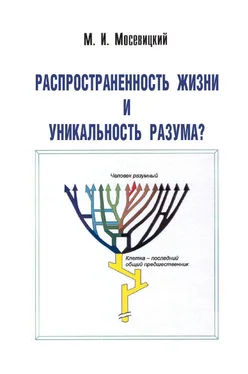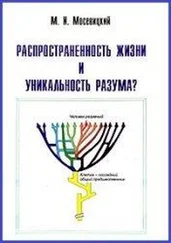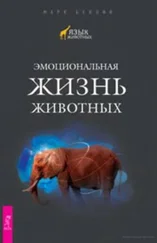Martin R. D. et al. (2007) Primate origins: implications of a cretaceous ancestry. Folia Primatol (Basel), 78, 277―296.
Martinez-Banaclocha M. A. (2005) Magnetic storage of information in the human cerebral cortex: a hypothesis for memory. Int. J. Neurosci., 11, 5329―5337.
Marvin U. B. (1984) A meteorite from the Moon. Smithson. Contrib. Tarth Sci., 26, 95―103.
Marzoli A. et al. (1999) Extensive 200-million-year-Old continental flood basalts of the central atlantic magmatic province. Science, 284, 616―618.
Maurer P. et al. (1978) Pre-Imbrian craters and basins: ages, compositions and excavation depths of Apollo 16 breccians. Geochemica et Cosmochemica Acta, 42, 1687―1720.
McDaniel M. (2005) Big-brained people are smarter. Intelligence, 33, 337―346. McDougall I. et al. (2005) Stratigraphic placement and age of modern humans from Kibish, Ethiopia. Nature, 433, 733―736.
McElroy M. B. (1994) Climate of the earth: an overview. Environ Pollut., 83, 3―21. McKay C. P. (2000) Thickness of tropical ice and photosynthesis on snowball Earth.
Geophys. Res. Lett., 27, 2153―2156.
McKay D. S. et al. (1996) Search for past life on Mars: possible relic biogenic activity in martian meteorite ALH84001. Science, 273, 924―930.
McKay D. S. et al. (1997) Reply. Nature, 390, 455.
McSween H. Y. (1985) SNC Meteorites: clues to Martian petrologic evolution? Rev.
Geophysics, 23, 391―416.
McSween H. Y. (1989) Chondritic meteorites and the formation of planets. American Scientist, 77, 146―153.
Meinschein W. G. et al. (1963) Evidence in meteorites of former life: the organic compounds in carbonaceous chondrites are similar to those found in marine sediments. Ann. N. Y. Acad. Sci., 108, 553―579.
Meierhenrich U. J. et al. (2004) Identification of diamino acids in the Murchison meteorite. Proc. Natl. Acad. Sci. USA, 101, 9182―9186.
Meierhenrich U. J. and Thiemann W. H. (2004) Photochemical concepts on the origin of biomolecular asymmetry. Orig. Life Evol. Biosph., 34, 111―121.
Meierhenrich U. J. et al. (2005) Precursors of biological cofactors from ultraviolet irradiation of circumstellar/interstellar ice analogues. Chemistry, 11, 4895―4900.
Mekel-Bobrov N. et al. (2005) Ongoing adaptive evolution of ASPM, a brain size determinant in Homo sapiens. Science, 309, 1720―1722.
Mekel-Bobrov N. et al. (2007) The ongoing adaptive evolution of ASPM and Microcephalin is not explained by increased intelligence. Hum. Mol. Genet., 16, 600―608.
Mellars P. (2003) Going east: new genetic and archaeological perspectives on the modern human colonization of Eurasia. Science, 313, 796―800.
Melosh H. J. (2003) Exchange of meteorites (and life?) between stellar systems. Astrobiology, 3, 207―215.
Mercer T. R. et al. (2008) Specific expression of long noncoding RNAs in the mouse brain. Proc. Natl. Acad. Sci. USA, 105, 716―721.
Menneken M. et al. (2007) Hadean diamonds in zircon from Jack Hills, Western Australia. Nature, 448, 917―920.
Michel P. et al. (2003) Disruption of fragmented parent bodies as the origin of asteroid families. Nature, 421, 608―611.
Miller S. L. and Urey H. C. (1956) Organic compound synthesis on the primitive Earth. Science, 130, 245―251.
Miller S. L. (1986) Current status of the prebiotic synthesis of small molecules. Chemica Scripta, 26B, 5―11.
Miller V. M. et al. (2004) Evidence of nanabacterial-like structures in calcified humanarteries and cardiac valves. Am. J. Physiol. Heart Circ. Physiol., 287, H1115―1124.
Miller E. R. et al. (2005) Deep time and the search for anthropoid origins. Am. J. Phys. Anthropol., 41, 60―95.
Mishmar D. et al. (2004) Mitochondrial DNA-like sequences in the nucleus (NUMTs): insights into our African origins and the mechanism of foreign DNA integration. Hum. Mutat., 23, 125―133.
Miyakawa S. et al. (2002) Prebiotic synthesis from CO atmospheres: implications for the origins of life. Proc. Natl. Acad. Sci. USA, 99, 14628―14631.
Mojzsis S. J. et al. (1996) Evidence for life on Earth before 3,800 million years ago.
Nature, 384, 55―59.
Mojzsis S. J. et al. (2001) Oxygen-isotope evidence from ancient zircons for liquid water at the Earth™s surface 4,300 Myr ago. Nature, 409, 178―181.
Molnar Z. (2006) Comparative aspectsof cerebral cortical development. Eur.
J. Neurosci., 23, 921―934.
Monnard P. A. and Deamer D. W. (2002) Membrane self-assembly processes: steps toward the first cellular life. Anat. Rec., 268, 196―207.
Moreira D. and Lopez-Garcia P. (1998) Symbiosis between methanogenic archaea and d-proteobacteria as the origin of eukaryotes: the syntrophic hypothesis. J. Mol. Evol., 47, 517―530.
Morris M. S. and Thorne K. S. (1988) Wormholes in spacetime and their use for interstellar travel: A tool for teaching general relativity. Am. J. Physics, 56, 395―412.
Morrison D. (2003) Impacts and evolution: future prospects. Astrobiology, 3, 193―205.
Morwood M. J. et al. (2004) Archaeology and age of a new hominin from Flores in eastern Indonesia. Nature, 431, 1087―1091.
Morwood M. J. et al. (2005) Further evidence for small-bodied hominins from the late pleistocene of Flores, Indonesia. Nature, 437, 1012―1017.
Mosevitsky M. I. (1978) Model for genetic recombination by co-ordinated recombinase action. Studia biophysica, 73, 85―86 and microfiche 1/1―17.
Mьller D. et al. (2000) Spine changes associated with long-term potentiation. Hippocampus, 10, 596―604.
Mьller J. and Reisz R. R. (2005) Four well-constrained calibration points from the vertebrate fossil record for molecular clock estimates. Bi―ssays, 27, 1069―1075.
Nagy B. (1975). Carbonaceous meteorites. Amsterdam, Elsevier.
Nanita S. C. and Cooks R. G. (2006) Serine octamers: cluster formation, reactions, and implications for biomolecule homochirality. Angew. Chem. Int. Ed. Engl., 45, 554―569.
Nakatsukasa M. et al. (2007) Femur length, body mass, and stature estimates of Orrorin tugenensis, a 6 Ma hominid from Kenya. Primates, 48, 171―178.
Nei M. and Takezaki N. (1996) The root of the phylogenetic tree of human populations. Mol. Biol. Evol., 13, 170―177.
Neill J. C. et al. (2001) Enhanced auditory reversal learning by genetic activation of protein kinase C in small groups of rat hippocampal neurons. Brain Res. Mol., 93, 127―136.
Nelson K. E. et al. (2000) Peptide nucleic acids rather than RNA may have been the first genetic molecule. Proc. Natl. Acad. Sci. USA, 97, 3868―3871.
Nesvorny et al. (2002) The recent breakup of an asteroid in the main-belt region. Nature, 417, 720―721.
Nesvorny et al. (2006) The breakup of a main-belt asteroid 450 thousand years ago. Science, 312, 1490.
Newsom H. E. and Taylor S. R. (1989) Geochemical implications of the formation of the Moon by a single giant impact. Nature, 338, 29―34.
Nielsen P. E. et al. (1991) Sequence selective recognition of DNA by strand displacement with a thymine-substituted polyamine. Science, 254, 1497―1500.
Niew―hner W. A. (2001) Behavioral inferences from the Skhul/Qafzeh early modern human hand remains. Proc. Natl. Acad. Sci. USA, 98, 2979―2984.
Nisbet E. G. and Fowler (1996) Some liked it hot. Nature, 382, 404―405.
Nissen P. et al. (2000) The structural basis of ribosome activity in peptide bond synthesis. Science, 289, 920―930.
Nuevo M. et al. (2008) A Detailed Study of the Amino Acids Produced from the Vacuum UV Irradiation of Interstellar Ice Analogs. Orig. Life. Evol. Biosph., 38, 37―56.
Noonan J. P. et al. (2006) Sequencing and analysis of Neanderthal genomic DNA. Science, 314, 1113―1118.
Oberbeck V. R. et al. (1991) Prebiotic chemistry in clouds. J. Mol. Evol., 32, 296―303.
Ohmoto H. et al. (1993) 3.4-billion-year-old biogenic pyrites from Barberton, South Africa: sulfur isotope evidence. Science, 262, 555―557.
Читать дальше
Конец ознакомительного отрывка
Купить книгу










